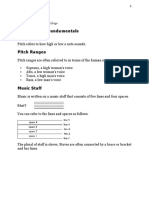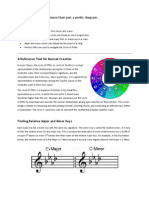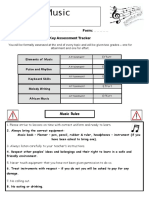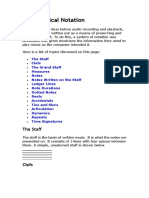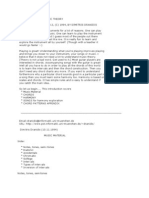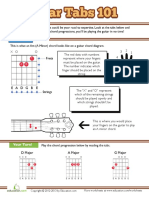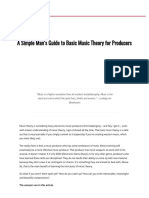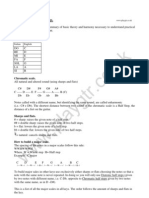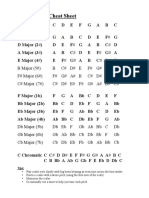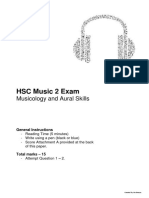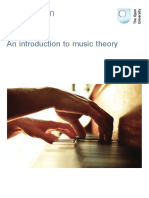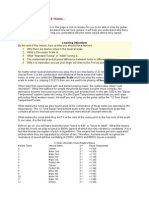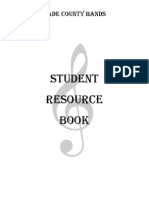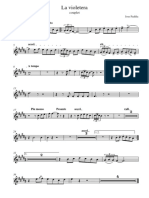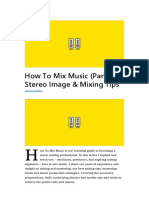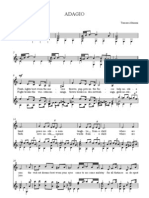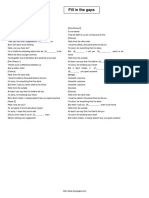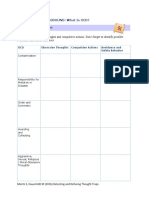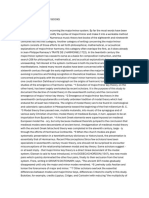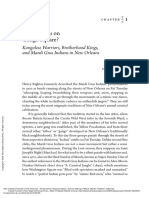Magix Piano & Keyboard Workshop 2nd Edition Notes
MUSICAL THEORY NOTES
THIS PAGE OF NOTES GIVES YOU A QUICK GUIDE TO MUSICAL THEORY
AND WILL COME IN HANDY FOR THE LESSONS PROVIDED.
MUSICAL NOTES
C# D# F# G# A#
Db Eb Gb Ab Bb
C D E F G A B C
(this is one octave)
* * ** * *
(this is 4 octaves; 5 octaves with boxed section on larger keyboards)
The note C is the white note at the bottom of the keyboard (i.e. the far left hand side). The
first black note is C sharp/D flat to the right of C, and so on. The pattern is repeated at
every starred point, and each of these sections is known as an Octave. The double star
denotes the ‘middle’ of the keyboard, the note thus named middle C. This is the starting
point for lesson one.
r This symbol is a SHARP. It means that the note is a semitone (one note) high than it
would be without the symbol. (usually a Black Note)
t This symbol is a FLAT. It means that the note is a semitone lower than it would be
without the symbol. (usually a Black Note)
v This Symbol is a natural. It places the note back to its original pitch if it has been
previously effected within the bar or by the Key Signature.
Magix 2003
� Magix Piano & Keyboard Workshop 2nd Edition Notes
Hence, C sharp and D flat are the same note. They are the note that lies between C and D,
and there is only one of note between C and D, therefore they must be the same note. The
reason that this note has two names is because it varies in relation to the key of the music.
Sharps and Flat are often placed in front of notes, they apply to that note, and any note that
is the same within the bar (i.e. before the next vertical line that helps split up the music, see
BAR LINES below)
NOTE NAMES
The stave is represented by five horizontal lines. The Right Hand plays in the TREBLE
CLEF and the Left Hand in the BASS CLEF. These CLEFS show the relevant positions of
the notes on the musical score.
The TREBLE clef
C D E F G A B C D E F G
The BASS clef
F G A B C D E F G A B C
For notes that are beyond these ranges LEDGER LINES are added either above or below
the stave. For example, the treble and bass clefs continue as follows;
A B C D E D C B
Magix 2003
� Magix Piano & Keyboard Workshop 2nd Edition Notes
NOTE LENGTH
The most basic note length is the Crochet. This is the most common note length and is
usually dictated by the Metronome feature in Piano & Keyboard Workshop 2nd Edition.
semi-breve 4 crochets long
minim 2 crochets long
crochet 1 crochet long
quaver ½ crochet long
semi-quaver ¼ crochet long
A dotted note means that the length is extended by a half. Therefore a dotted crochet
would last one-and-a-half beats, or a dotted minim, two plus one beats, three.
TIME AND KEY SIGNATURE, BAR LINES AND TIES
The Time and Key Signatures are displayed at the very start of the musical score.
Key Signature If a sharp or flat appears on the stave before the musical notes start,
work out what note name is effected. This now means that the note
must be adjusted every time it appears in the music unless it is
preceded by another sharp, flat or natural.
Time Signature This is represented by the two numbers that sit on top of one another at the
start of the musical stave. 4 on top of 4 means that there are four
crochets beats per bar. This is the case for the majority of pop
music for example. 3/4 means three crochets in a bar. If an 8
appears as the bottom of the two figures, then the main beat of the
bar is quavers, however, for the purposes of these lessons, this is
unlikely. Each bar is split up by a bar line
Bar Lines Bar lines are an effective way of splitting up the music into more
manageable chunks. Each bar is the same.
Ties Musical Ties are lines that join or tie the same notes together. If a
two beat note is tied to a three beat note, then the note must last 5
beats. Often whole bars will be tied together at the end of a piece,
or a long note, such as a minim (2 beats) will be tied to a quaver (½
beat) as there is no other way of showing this on the score.
Magix 2003


